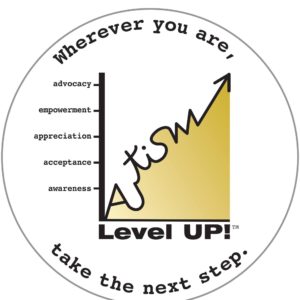 Like the puzzle pieces commonly used to symbolize autistic individuals as perplexing, autism tends to engender misunderstanding. Summit Academy Community School – Dayton Behavior Specialist, Em Ellis, LSW, who works with and advocates for autistic children, says the name change of the nationally recognized month – from Autism Awareness Month to Autism Acceptance Month – is a step in the right direction.
Like the puzzle pieces commonly used to symbolize autistic individuals as perplexing, autism tends to engender misunderstanding. Summit Academy Community School – Dayton Behavior Specialist, Em Ellis, LSW, who works with and advocates for autistic children, says the name change of the nationally recognized month – from Autism Awareness Month to Autism Acceptance Month – is a step in the right direction.
To help heighten public understanding, Ellis describes six common misconceptions and realities about autism.
1. Autism is not a behavioral disorder or a disease.
Autism is a neurological, developmental condition, explains Ellis. She says that autistic individuals process the world differently than non-autistic people, also called allistic people. Autism happens before birth, she says.
“Autistic people are born autistic. They will always be autistic, which does not mean they have a disease or illness in need of a cure. Being autistic is a different way of being human,” Ellis says. “Autistic individuals are not broken. They do not need a cure and they don’t need to become ‘normal.’”
Ellis emphasizes that just because one person’s brain processes the world differently than another’s, it does not mean it is wrong.

Autistic individuals may behave in different ways than non-autistic people, but for good reasons, according to Ellis. For example, she says eye contact may be uncomfortable and even painful to an autistic person and advises others not to force it.
2. Autism isn’t just a label.
Ellis says most autistic individuals prefer identity-first language, or being referred to as autistic rather than as a “person with autism.” The reasoning behind this, Ellis explains, is because autism cannot be removed from the person or separated from who they are. She adds that being autistic impacts a person’s mind, body, emotions and memories.
For many individuals, getting a diagnosis not only validates why they understand things differently from others, but it opens doors to needed services and accommodations. Ellis says her family celebrated when her daughter received a diagnosis of autism because “it validated who we already knew she was.”
Ellis adds that while in her experience she has learned that the preference would be to refer to someone as an autistic person over a person with autism, this may not be the case 100 percent of the time. “If a person specifically prefers to be referred to as someone with autism, you should respect their wishes,” she says.
Sara, an autistic artist at Pebbel Art who creates art about mental health, recommends asking autistic friends and associates how they prefer to be acknowledged.
4. There is no puzzle to be solved.
In her experience, Ellis says she has learned thast most autistic people are not in favor of the puzzle piece associated with autism.
“It historically represents the idea that autistic individuals are puzzling, confusing and suffering from autism,” Ellis says, adding that autistic people are typically happy in their own skin. “Autistic people like being autistic.”
In replacement of the puzzle piece, a gold infinity symbol is emerging. Ellis says the color gold represents the periodic element for gold, which is “Au.” Gold illustrates acceptance while the infinity symbol defines the infinite spectrum and diversity of autistic individuals.
4. Nonverbal does not mean incompetence.
“Being non-speaking or limited in communication does not mean an individual has nothing to say. It also doesn’t mean they don’t understand more than they are able to express,” Ellis says. She points out that is it important to presume competence, that autistic individuals have the ability to learn, think and understand even though they may be unable to express they can.
“Non-speaking autistic people have opinions, thoughts, perspectives and beliefs, even if people assume they’re not there,” says Chris Bonnello from Autistic Not Weird.
5. Autism is not only for children.
Autistic children do not grow out of being autistic, Ellis says.
“There is no cure, nor does there need to be one,” she says.
Ellis adds that it is important for parents, educators and others to seek out the advice and wisdom of autistic adults. “They have lived through the experience of being an autistic child and can relate to and understand a child in the way that parents who are non-autistic cannot.”
6. Functioning labels are not only offensive, they are misleading.
“There is no such thing as ‘mild autism’ or high- or low-functioning autism. You are either autistic or non-autistic,” says Ellis, adding that an individual cannot be mildly autistic.
Not only are functioning labels offensive to the autistic community, they are often used to deny services and resources, or autonomy, Ellis explains. She advises parents of autistic children to explain how their child may need support. For example, a child may communicate most effectively through pictures versus through detailed spoken words.
Em Ellis, LSW, works regularly with autistic children and is an advocate for the autistic community. Her husband and two children are autistic, and Ellis is neurodiverse in another way, ADHD – Attention Deficient Hyperactivity Disorder.
Resources that contributed to Ellis’ understanding of the autistic community:
Autism Level Up (autismlevelup.com)
Identity-First Autistic (www.identityfirstautistic.org)
Autistic Not Weird
Autistic Self Advocacy Network (ASAN)
Quirky.Stimmy.Cool Tiffany Tully
Aspirational Autistic, Taylor Linloff
In the Loop About Neurodiversity
Autism Inclusivity Group, an Autistic-led Community on Facebook
